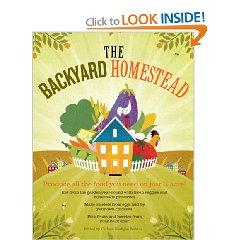
To best understand sustainable living homesteads, it is necessary to understand the term sustainable living.
Understanding Sustainable Living
Sustainable living is not something new, but it is something that needs to be renewed. Many of us remember grandparents who raised their own food. Those people did not depend on tractor trailer trucks to haul food to meet their needs. In fact, if your grandparents couldn't grow it, or make it, they probably traded with neighbors within the community who could. Sustainable means using resources in a way that does not deplete or damage them. This includes cutting the pollution and depletion of resources brought about by the transportation of food and other items.
Establish Your Sustainable Homestead
Apply this way of living to your home and the land on which you live and it is known as a sustainable living homestead. As such, it is a lifestyle that works to reduce your carbon footprint and affects your life in a variety of ways including:
- Diet
- Energy consumption
- Transportation
The main goal of sustainable living is to preserve the Earth and its resources for future generations. In some cases, this is accomplished as a part of a community and in others it is accomplished one homestead at a time.
Growing Food

Sustainable living encourages the production of chemical and pollution free food. You can start by growing fresh organic produce right in your back yard. Along with growing fruits and vegetables, other ways to produce food on a sustainable living homestead include things like:
- Beekeeping
- Fish farming
- Raising chickens
- Raising goats
- Raising a cow
Another option some communities embrace is a neighborhood garden along with a market where the produce is sold and proceeds used to help the community.
Renewable Energy
Like sustainable living, renewable energy is not something new. It's is only in the last one hundred years or so that we have moved away from renewable energy as the population learned to depend on non-renewable energy sources such as coal and petroleum. The pendulum is swinging back the other way now, as more people are seeking renewable resources to meet their energy needs.
Renewable energy sources include:
- Biomass - organic material used as fuel.
- Ethanol - a high octane fuel made from grain. It is biodegradable and does not harm the environment in any way.
- Biodiesel
- Hydropower
- Geothermal
- Wind
- Solar
Transportation
Sustainable living affects transportation on more than one level. First of all, when you meet more of your needs through sustainable living it will require less use of diesel fuel as it cuts the transportation needed to haul items you would have bought. But let's take a look at your personal transportation. Does sustainable living limit you to walking and riding a bicycle to get around?
Actually walking and biking are a great way to get from point A to point B, but it's not the easiest or most realistic way to travel long distances. When you do have to leave your homestead to travel any distance, your goal should be to protect the environment by selecting transportation that has the least impact on the environment. This can include things like taking public transportation and car pooling.
Resources for More Information

If sustainable living sounds like something that interests you, but you don't know where to start, there are a variety books and organizations that offer help. The Backyard Homestead is one book that shows you where to start and how to harvest, cook, preserve and everything else you need to grow, prepare and store your own food. The following books offer additional information:







